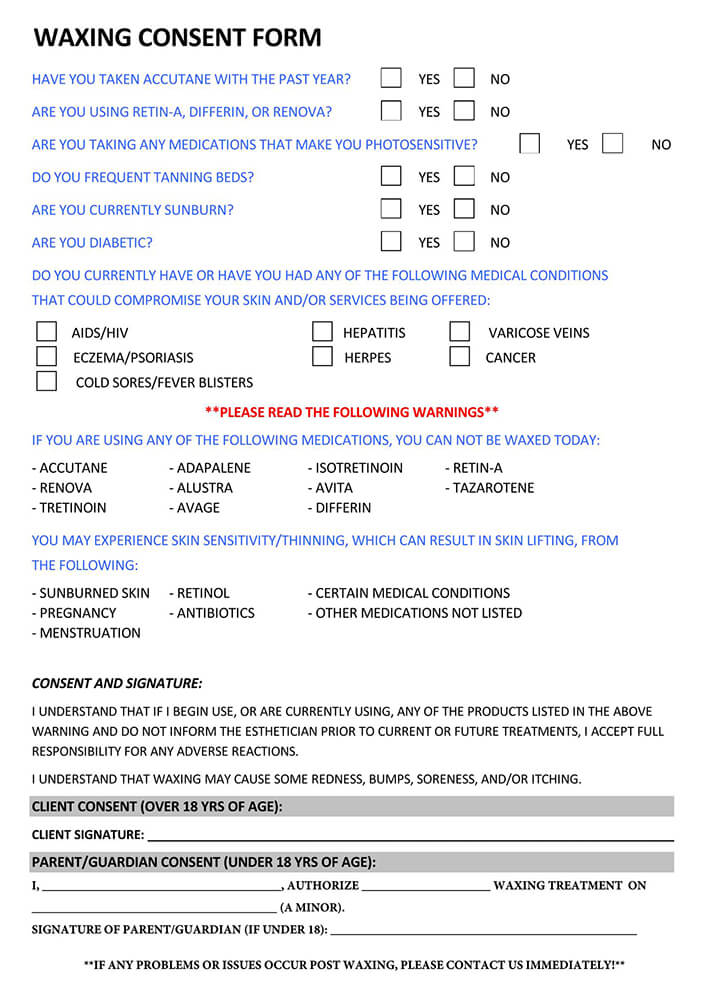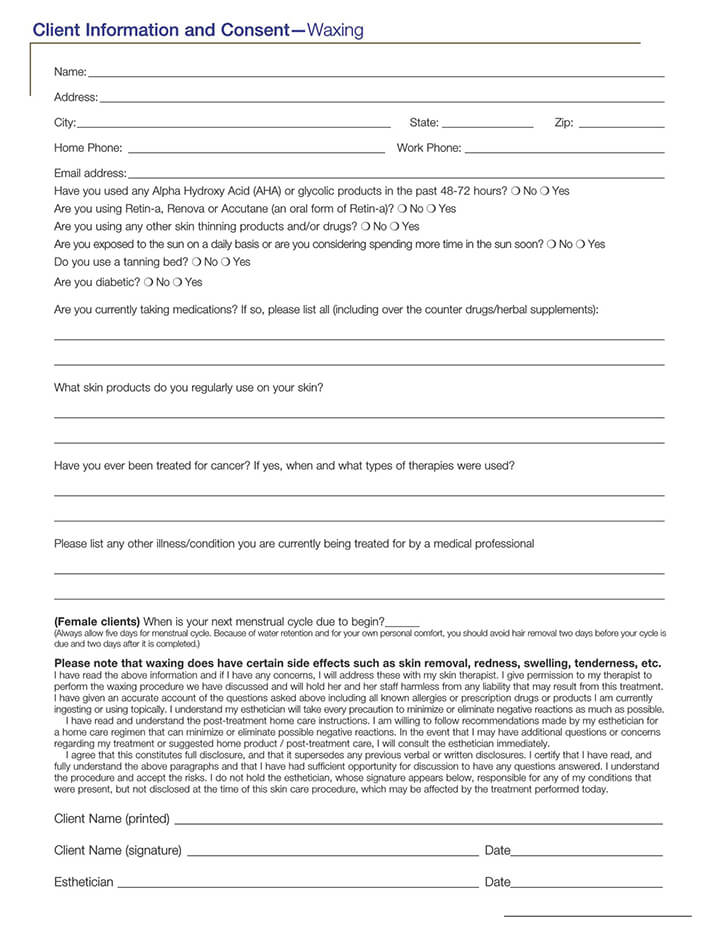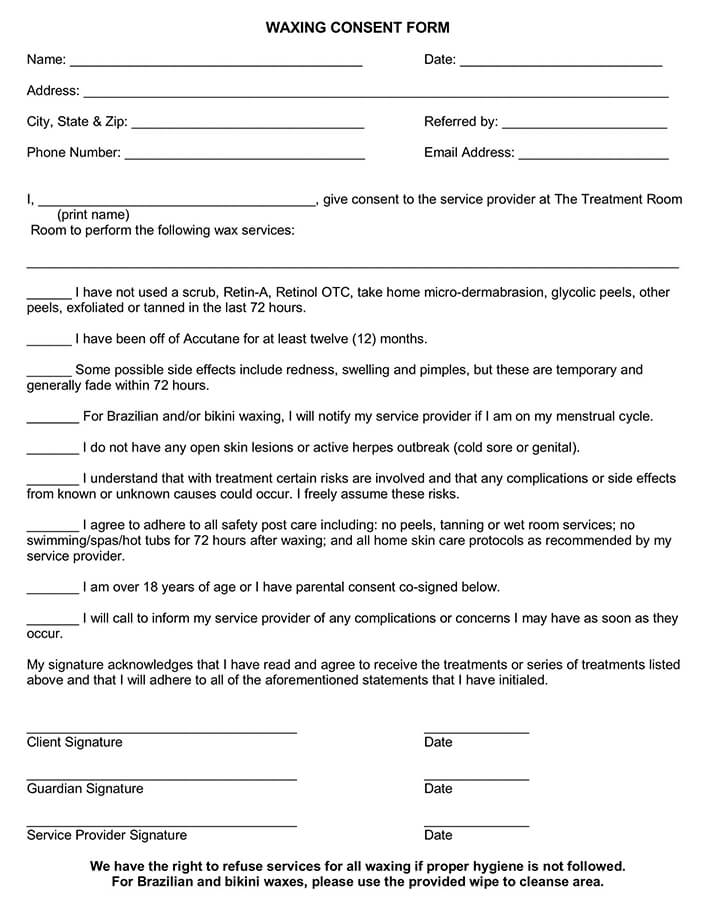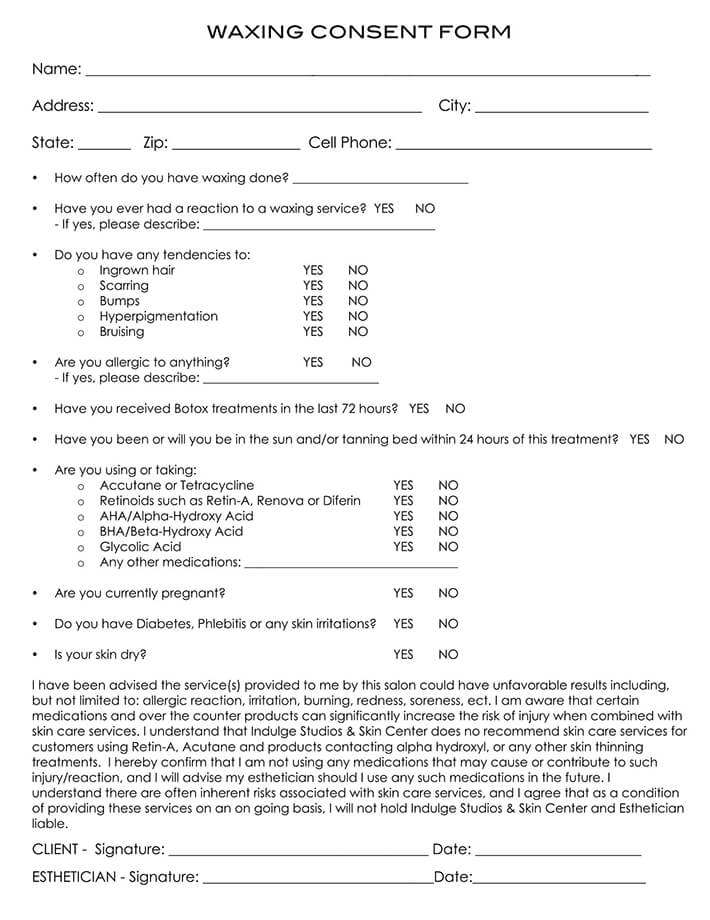For most cosmetic procedures, you will need to have a client fill out a consent form of some type. They are used to not only give the client all the necessary information they need to make an informed decision but also to protect yourself and your salon from any liabilities should something go wrong.
Waxing is a form of hair removal that utilizes a sticky substance to remove hair from the root. It lasts longer than shaving and can be done in most areas of the body. There are some drawbacks to it, such as mild pain, ingrown hairs, and some minor bleeding. There is also something known as “skin lifting,” where the top layer of skin comes away with the hair. It’s for these reasons that consent forms are essential.
What is a Waxing Consent Form?
A waxing consent form is used to inform the client of what is being done. Any side effects or symptoms they may experience, any issues they need to be aware of for aftercare, and let the client be fully aware that they are responsible for any responsibilities or ramifications once they sign the consent form. It is also used for a parent or guardian to sign, allowing a minor to have this treatment.
These forms are relatively straightforward. You can download one of our many templates and samples to get a clearer idea of what should be on the way.
The form should have the clients’ details, including what they have done for that session. You should also ask the client if they have any allergies to any of the ingredients you may be using, whether they are undergoing any medical care for things like cancer treatments or hyperpigmentation, and if they have medical conditions such as diabetes. It’s also essential to find out if they have recently had other treatments done that can make the skin more sensitive, such as alpha-hydroxy acid, Retin-A, Accutane, or glycolic peels.
The next section of your form should go over what is involved in the treatment, anything they need to be aware of, such as after-effects, risks, and side effects, and what outcome to expect. It should be as informative as possible, and you should make sure that the client understands everything and asks any questions they may have before they sign the form.
There should be an after-treatment section that explains to the client what they need to do once the treatment has been done, such as how to deal with any swelling, redness, or minor discomfort.
The last part should be the waiver and release form, which protects you from liability should something go wrong after treatment. It will state that the client understands their responsibilities in aftercare and that everything was clearly explained to them.
Free Forms
A waxing consent form is a crucial document that ensures both parties involved understand and agree to the terms and conditions of the procedure. By using our pre-built templates, you can save time and effort when creating your own. Our templates are professionally designed, comprehensive, and cover all the necessary information. Download them for free and streamline your consent process effortlessly.




Waxing Guidelines and Laws
In most states, you need to have an esthetics or cosmetology license to perform waxing treatments on others. If you are not licensed and have not met your state requirements to perform these services, you could face a lawsuit, regardless of whether a client signed a consent form, especially if you led them to believe you were licensed.
Frequently Asked Questions
As long as the parent previously agreed to the treatment, a minor can go to the procedure on their own.
Most salons will not perform this treatment on anyone under 12, even with the parents’ or guardians’ permission.
No. Having an esthetician or cosmetologist license means only you can perform those services. Anyone performing those services in your salon must have their permission and undergo the appropriate training at a licensed facility.











